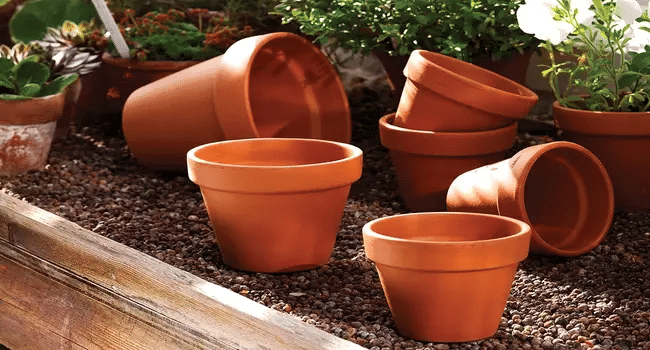Plant cultivation in containers can be an enjoyable and fulfilling activity, whether space is limited or you just want to add greenery to your surroundings. With plastic pots being inexpensive, long-lasting, and lightweight compared to their counterparts available to us today – not all plastic pots being equal and choosing an appropriate one having an effectful influence on plant health and growth – container gardening offers you many possibilities and here we present essential guidelines that will assist in selecting suitable plastic growth containers for gardening ventures.
- Consider Size And Depth
The scale and depth of the plastic containers you use to grow plants have an enormous effect on their health and development. Choosing larger pots allows more room for root development while conserving moisture – particularly helpful for plants with extensive root systems or those needing lots of it in their soil environment. Conversely, smaller container sizes are suitable for compact or shallow-rooted varieties.
Before purchasing plastic pots, it is essential to take into account the mature size of your plants and select containers with enough room for their development. Also, ensure that there are enough drainage holes to avoid waterlogging as this can lead to root rot or other issues with too much moisture entering the containers and flooding them.
- Assess Material Quality
Not all plastics are created equal; quality can differ significantly between models of plastic containers produced from different sources. When selecting pots made of UV-stabilized polymers of high quality that can withstand external environments and ensure long-term usage, such as sunlight exposure. These containers will remain unblemished over time while still looking their best!
To gauge the durability of containers, it is necessary to assess their thickness in terms of wall and bottom plastic thickness. Plastic that is too thin can bend or crack over time, leaving your plants more susceptible to damage than they would be with more solid containers that are well constructed – an investment that will pay dividends through healthier plants that resist disease more readily.
- Choose An Appropriate Skin Tone
You might be surprised to learn this, but the color of the containers you use to house your plants could affect their health. Pots made from darker colors absorb more heat from sunlight, raising soil temperatures and potentially harming sensitive roots in regions with high temperatures. In contrast, lighter-hued containers reflect sunlight out and keep soil cooler, making them better choices for heat-sensitive plants that may suffer damage as a result of the heat.
As you select the color of your plastic containers, keep the environmental conditions and heat tolerance of plants in mind when choosing their hue. If you live in an especially sunny zone, select lighter-hued pots so as not to overheat your plants; on the other hand, darker pots might provide extra warmth that could benefit colder environments.
- Determine Your Priorities
Proper drainage for container plants is necessary as it allows excess water to escape, keeping the soil moist without becoming saturated. When selecting plastic containers, look for those equipped with enough drainage holes on the bottom to enable water to escape the container – or consider drilling or punching holes yourself to improve drainage if the pots you prefer don’t already come equipped.
If you want to further improve ventilation and drainage, using pot feet or elevating containers on bricks or blocks might help enhance ventilation and drainage. By taking this simple step, water won’t pool beneath pots thereby decreasing root rot risk as well as fungal infections.
- Consider Aesthetic Appeal
When purchasing plastic containers, the utility should always come first; however, do not ignore their aesthetic appeal completely – plastic pots offer you a great opportunity to harmonize indoor and outdoor designs by matching different shapes, colors, and patterns available to choose from.
Choose plastic containers that add visual appeal to your plants and surroundings, whether that means traditional terra cotta tones, vibrant hues, or sleek, modern designs. It is important to remember that the best plastic growing containers find an equilibrium between design and function to boost both beauty and vitality in container gardens.
To select the ideal plastic growing containers for your plants, it is necessary to carefully consider size, material quality, color, drainage, and aesthetic appeal as factors when choosing containers that match these criteria. By creating the optimal conditions for plant growth in container gardening all year long and setting five essential variables of significance into place you will experience its rewards and beauty year after year! So next time you go pot shopping – give those matching these criteria your support and watch how your garden flourishes as a result!
